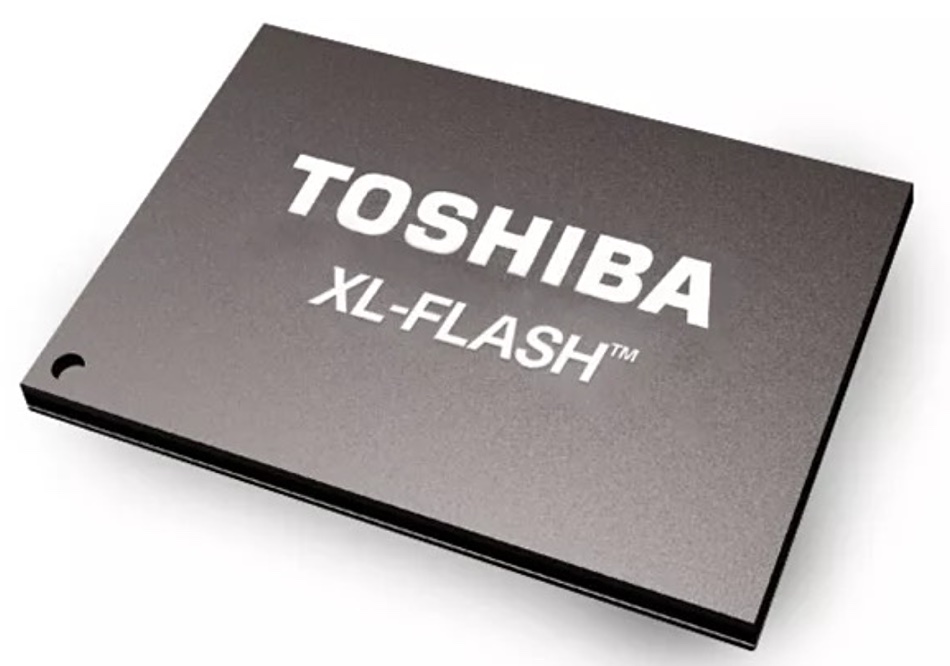Kioxia exhibited second-generation storage class memory flash at the FMS 2022 event in Santa Clara, with a lower cost per GB than gen 1.
Update. Active plane clarification added to penultimate paragraph. 10 August 2022.
The FL6 storage-class memory SSD from Kioxia is based on first-generation XL-FLASH technology. The storage-class memory was called gen-2 XL-FLASH and, unlike the all-SLC (1 bit/cell) gen 1, this one adds MLC (2bits/cell) NAND to the mix. This enables a die capacity of 256Gbit. Two, four, or eight layers of chips can be stacked in one package.

The MLC addition, it states, “significantly reduces bit cost while providing high performance.” Kioxia provided no performance details but declared that the maximum number of simultaneously operating planes has also increased from the current model, which will allow for improved throughput.
It also said CXL support could be added in the future.
The Toshiba branding was perplexing as the device was exhibited on the Kioxia stand at FMS 2022, but maybe there’s a stock of existing cases.
The 2019 XL-FLASH announcement from Toshiba Memory America revealed gen-1 XL-FLASH details:
- 128 gigabit die (in a 2-die, 4-die, 8-die package);
- 4KB page size for more efficient operating system reads and writes;
- 16-plane architecture for more efficient parallelism;
- Fast page read and program times – XL-FLASH provides a low read latency of less than 5 microseconds, approximately 10 times faster than existing TLC;
We thought that the gen-2 XL-FLASH could have 32 planes, but we were wrong as a Kioxia spokesperson said: “The number of active simultaneous planes in BiCS5 XL-FLASH has increased from 4 to 8. The total number of planes for both generations is 16.”
We also think that there could be a successor to the FL6 – the FL7 perhaps – built using gen-2 XL-FLASH. In fact we would put money on that.








